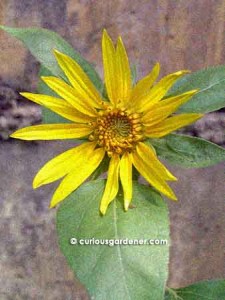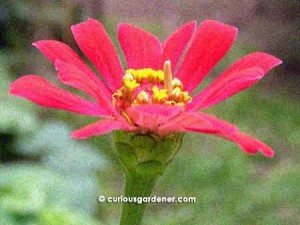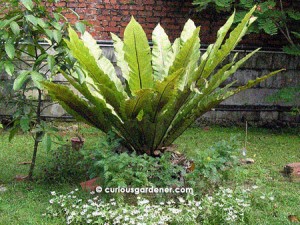
One of these things is not like the other... Reminder to myself to not mix up my seedlings!
There are some things a gardener just should not do, and whoa, have I fallen into that trap!
Firstly, since I revel in growing my plants from seeds, I made the mistake of sowing too many seeds at one go. When they all germinated at the same time, I didn’t cope well with planting them all in proper homes immediately.
When you grow plants from seeds, you also need to label them properly. I later realized that in my laziness in using initials, rather than writing the whole plant name, I had two sets of plants with the same label! I had to wait until the plants grew a bit bigger to try to differentiate the dwarf from the bigger plant – and even then, I still got it wrong!
In my recycling efforts, I’ve been using all kinds of plastic containers to pot my young plants – mostly cut-off bottle ends and plastic cups of various sizes. Those are alright for small plants, but you’ve got to remember to transplant them to better homes before too long.
Heh.
So, no thanks to my slow or no reaction, I now have all kinds of stunted plants growing…

"Miniature" Sungold sunflower - looks normal, but is only one-third the size it's supposed to be!

Mutant, looks-absolutely-nothing-like-it's-supposed-to Sunspot sunflower!

Half-a-metre tall sunflower that's supposed to be four times that height, with a bigger centre and three times as many, broader petals.

20cm tall, root bound and already starting to bud roselle plant growing in a plastic cup. It should grow strongly once I've transplanted it, burying part of the exposed stem as well.
Somebody smack me, I’ve been a lousy caretaker of my plants… 
Besides that, I also have to start sowing seeds all over again, and look after the plants properly when they do sprout. I will get them to grow as they’re supposed to! Eventually…
The moral of this story:
- Don’t grow more plants than you can take care of.
- Label the pots that you sowed the seeds in properly.
- Keep abreast of your plants’ needs, or feel the pain of seeing them not reach their full potential.
© 2011 curiousgardener.com All rights reserved.












